Home ← Streetcars ← Two Men & a Streetcar
Columbus Railway Power & Light Co. Streetcar Crews
In the early years of the Columbus streetcar system, there was a custom for a two-man crew (motorman and conductor) to have their photo taken standing in front of a streetcar. There are many examples of the "Two Men and a Streetcar" photo. The images typically lack detailed information, such as dates, names, or locations.As to the dates of these Real Photo Post Cards, a few clues point to the period between 1905 and the start of the United States' involvement in World War I.
In identifying the location, it helps to know that streetcar lines in Columbus were paired; for example, the Parsons Avenue line was paired with the Pennsylvania Avenue line and the Livingston Avenue line with the Fourth Street line.
The signage on the cars listed the two lines' names near the top center of the car side, for example, "Main & Neil." The signs on the ends of the car named the car's destination on the front, "Main," and the origination, "Neil," on the car's rear. The following photos show some exceptions to this general signage convention.
If the reader would like more details on the individual streetcars shown here, you can consult the Columbus Streetcar roster. To view the 1915 streetcar map for Columbus, click here. Finally, to view the 1905 Streetcar Schedule, click here.
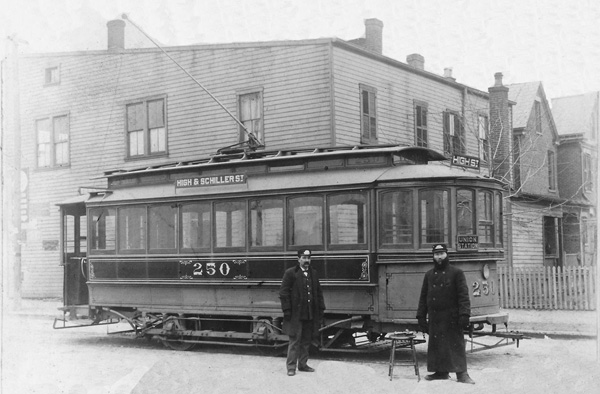
Click to enlarge
No. 250, single truck closed car built by the Brownell Car Co. in 1893. The car served the High–Schiller line. Frank Nixon the motorman on the right, was President Richard Nixon’s father. Photo from the Dave Bunge Collection, location unknown, Circa 1900.
Click to enlarge
No. 267, a double truck open car built by Barney & Smith Co. in 1895. The car served the Cleveland Avenue line to Linden, starting at Town and High Streets. Photo from the Alex Campbell Collection, location Cleveland Avenue, Circa 1905.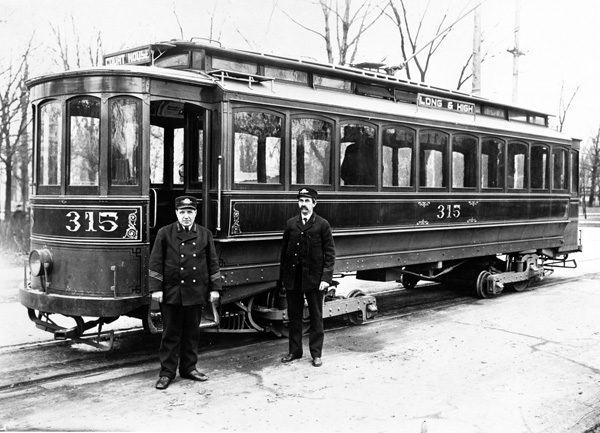
Click to enlarge
No. 315, double truck closed car built by J.G. Brill Co. in 1898. The car served the Long-High line to the Court House. Photo from the Alex Campbell Collection, location Parkwood Avenue at E. Broad Street, Circa 1905.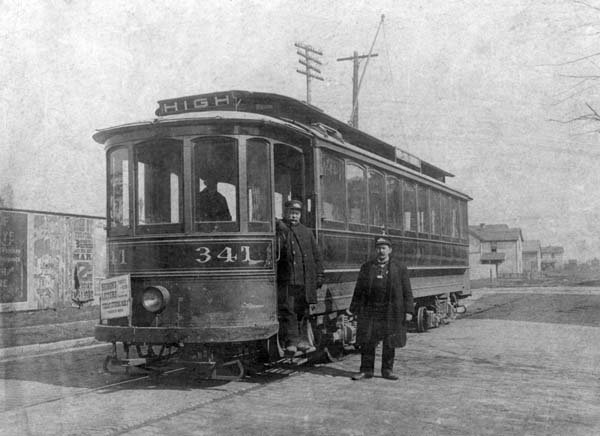
Click to enlarge
No. 341, double truck closed car built by the Barney & Smith Co. in 1900. Photo from the Galen Gonser Collection, location unknown, Circa 1905.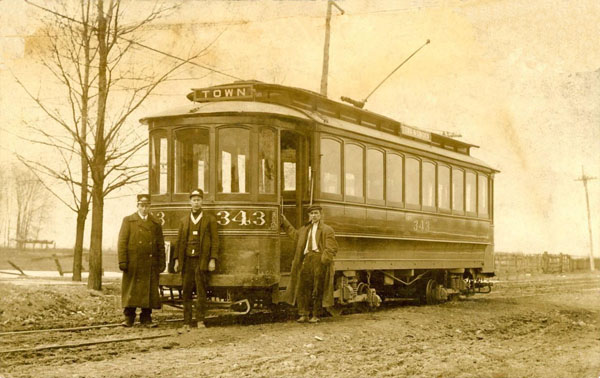
Click to enlarge
No. 343, double truck closed car built by the Barney & Smith Co. in 1900. The car served the Cleveland Avenue line to Linden, starting at Town and High Streets. Photo from Facebook Group - Vintage Columbus, Linden Area, location Cleveland Avenue, Circa 1910.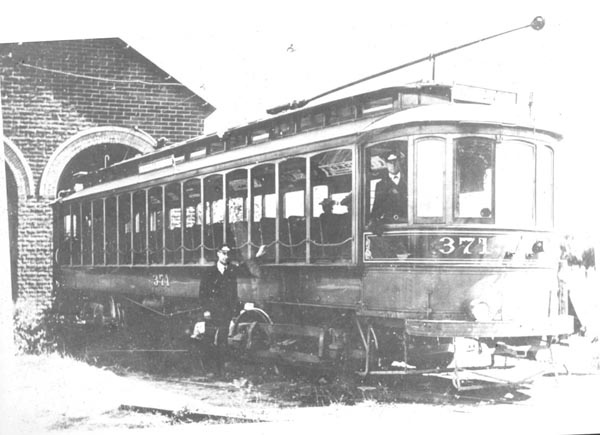
Click to enlarge
No. 371, a double truck convertible car built by the Columbus Railway Co. in 1901 - 1902. Photo from the Galen Gonser Collection, taken in front of the Westerville carbarn, the north end of the Westerville line. Circa 1910.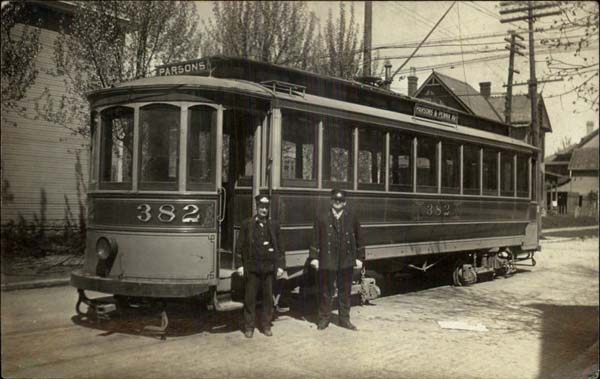
Click to enlarge
No. 382, a double truck closed car built by J.G. Brill Co. in 1901 - 1902. The car served the Parsons–Penna Av line. Photo from the Alex Campbell Collection, location unknown it may be Pennsylvania Avenue at Fifth Avenue, Circa 1910.
Click to enlarge
No. 388, a double truck closed car built by J.G. Brill Co. in 1901 - 1902. The car served the Long-High line. Photo from Alex Campbell Collection, location Parkwood Avenue at E. Broad Street, 1908.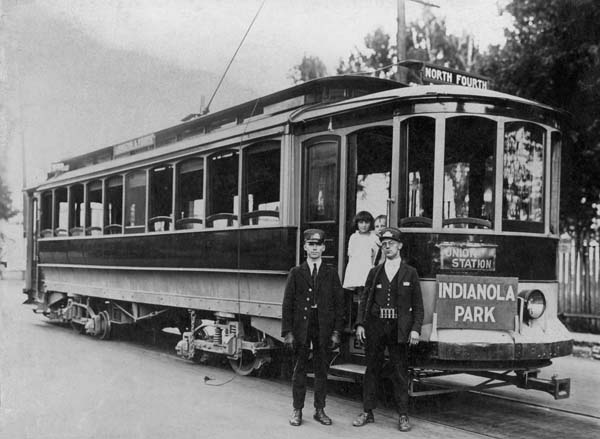
Click to enlarge
No visible number. A double truck P.A.Y.E closed car. This car served the Livingston-Fourth line. Photo from the Tom Boland collection. Circa 1915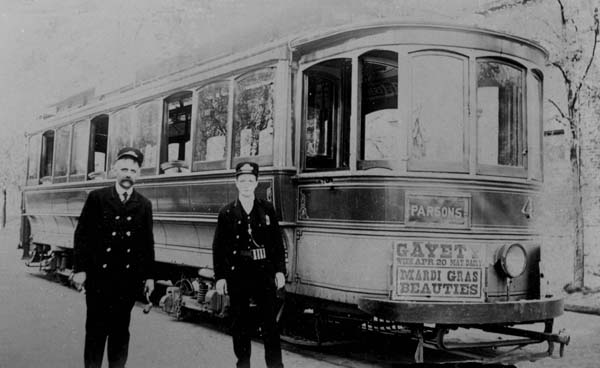
Click to enlarge
A 400 series streetcar. A double truck P.A.Y.E closed car. This car served the Parsons – Penna Av line. Photo from the Tom Boland collection taken in 1914.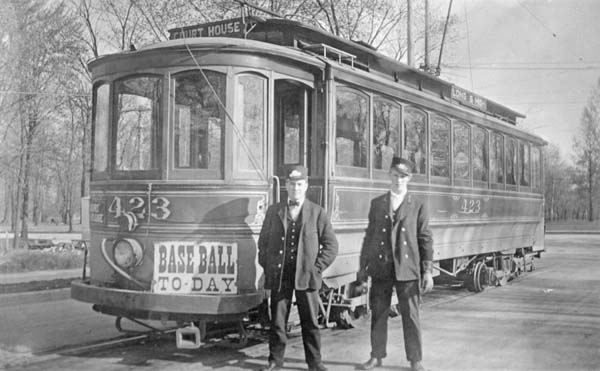
Click to enlarge
No. 423, the photo was taken on Parkwood Avenue at the east end of the Long Street line. East Broad Street and Franklin Park are in the background. Photo from the Tom Boland Collection taken in 1914.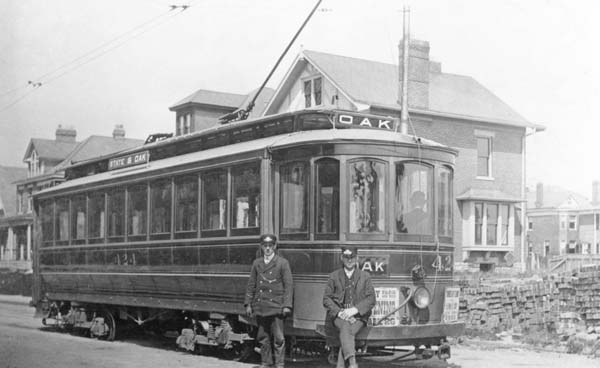
Click to enlarge
No. 424, double truck closed car built by J.G. Brill Co. in 1902 – 1903. This car served the State-Oak line. It is one of the few Columbus streetcars equipped for multi-unit operation. Photo from the Tom Boland Collection, location unknown. Circa 1910.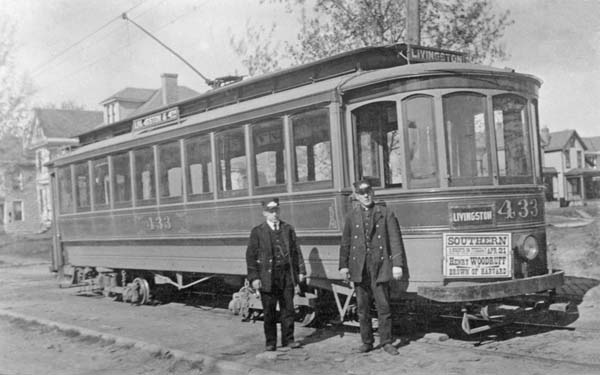
Click to enlarge
No. 433, a double truck closed car built by J.G. Brill Co. in 1903. The car served the Livingston–N 4th line. Henry Woodruff in "Brown of Harvard" played at the Southern Theater on April 22, 1908. Photo from the Tom Boland Collection. Location unknown, it may be N Fourth Street at Wyandotte Avenue.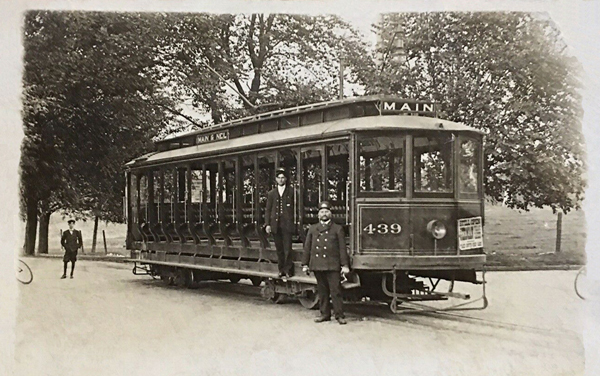
Click to enlarge
No. 439, a double truck open car built by the St. Louis Car Co. in January 1903. This car served the Main–Neil line. Photo from Alex Campbell Collection, location unknown, Circa 1910.
Click to enlarge
No. 442, double truck open car built by the St. Louis Car Co. in January 1903. This car served the Livingston-N Fourth line. Homer Rodeheaver & B. D. Aceley were musicians for Billy Sunday. Photo from the Galen Gonser Collection, location unknown. Circa 1910.
Click to enlarge
No. 445, a double truck open car built by the St. Louis Car Co. in January 1903. This car served the Parsons–Penna Av line. Photo from Galen Gonser Collection, location unknown, Circa 1910.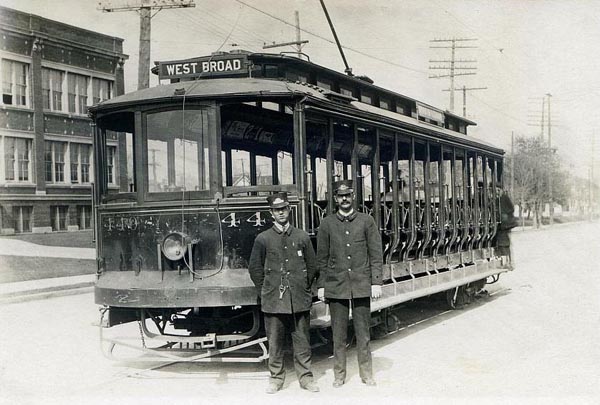
Click to enlarge
No. 449, a double truck open car built by the St. Louis Car Co. in January 1903. This car served the Broad-leonard line. The photo was taken at the west end of the West Broad Street line at Hague Avenue. A corner of the West Broad Elementary School can be seen. Photo from Alex Campbell Collection, Circa 1915.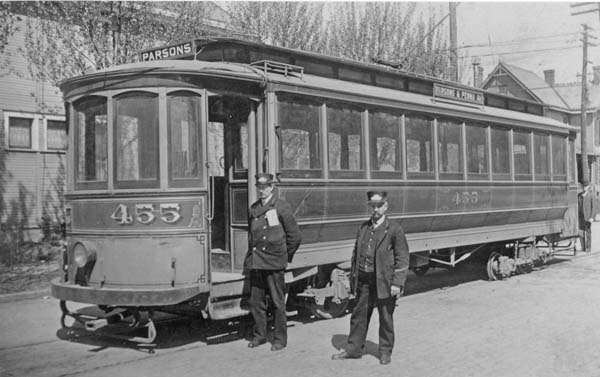
Click to enlarge
No. 455, a double truck closed car built by J.G. Brill Co. in 1903. The car served the Parsons-Penna Av line. Photo from the Tom Boland Collection. location unknown it may be Pennsylvania Avenue at Fifth Avenue. Circa 1910.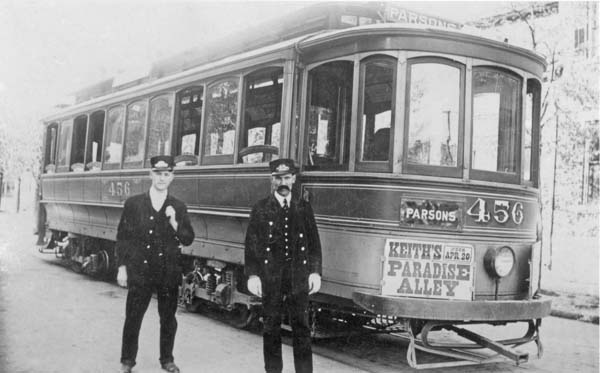
Click to enlarge
No. 456, a double truck closed car built by J.G. Brill Co. in 1903. The car served the Parsons-Penna Av line. Photo from the Tom Boland Collection, location unknown. Circa 1910.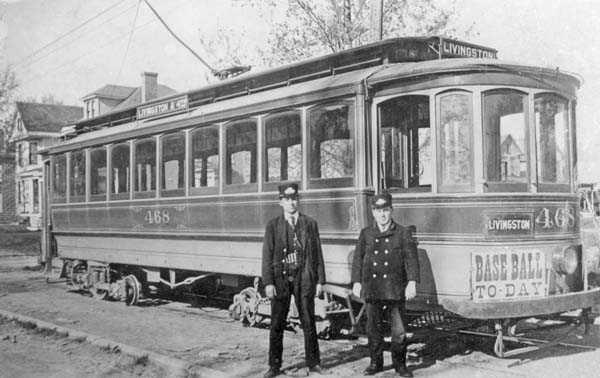
Click to enlarge
No. 468, a double truck closed car built by J.G. Brill Co. in 1903. The car served the Livingston-N 4th line. Photo from the Tom Boland Collection. Location unknown, it may be N Fourth Street at Wyandotte Avenue. Circa 1910.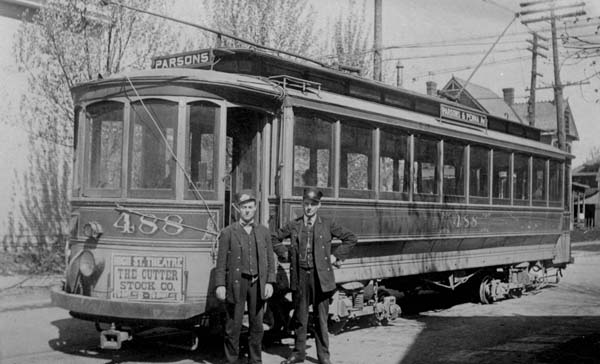
Click to enlarge
No. 488, a double truck closed car built by J.G. Brill Co. in 1903. The car served the Parsons-Penna Av line. Photo from the Tom Boland Collection. Location unknown it may be Pennsylvania Avenue at Fifth Avenue. Circa 1910.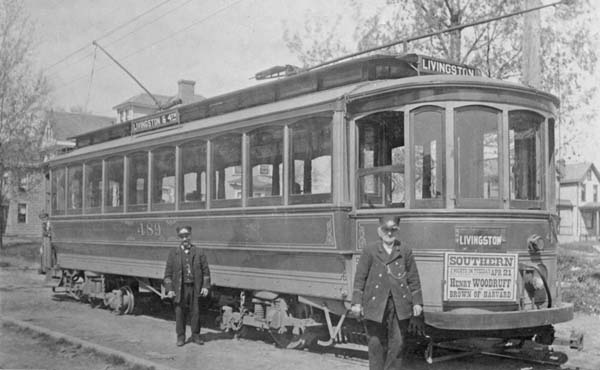
Click to enlarge
No. 489, a double truck closed car built by J.G. Brill Co. in 1903. The car served the Livingston-N 4th line. Photo from the Tom Boland Collection. Location unknown, it may be N Fourth Street at Wyandotte Avenue. Circa 1910
Click to enlarge
No. 492, a double truck closed car built by J.G. Brill Co. in 1903. The car served the Parsons-Penna Av line. Photo from the Tom Boland Collection, location unknown. Circa 1910.
Click to enlarge
No. 495, a double truck closed car built by American Car Co. in 1903. The car served the Arlington line. This was one of two cars equipped with four motors for the grade on Broadview Avenue. Photo from the Galen Gonser Collection, location unknown. Circa 1910.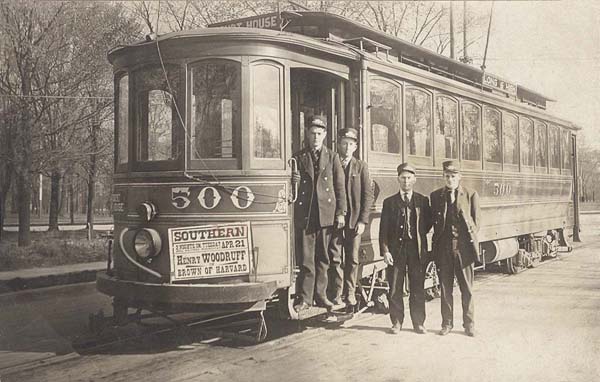
Click to enlarge
No. 500, photo was taken April 1908 on Parkwood Avenue at the east end of the Long Street line. East Broad Street and Franklin Park are in the background. Henry Woodruff in "Brown of Harvard" played at the Southern Theater on April 22, 1908. Photo from the Alex Campbell Collection.
Click to enlarge
No. 536, a closed car built by the G.C. Kuhlman Co. in 1906. This car served the High-Schiller line. Photo from Galen Gonser Collection, location unknown, Circa 1910.
Click to enlarge
No. 540, a double truck standard gauge interurban style car used on the Summit-Steelton line. Some cars went as far north as Worthington. Photo from the Jim Kehn Collection, location unknown. Circa 1910.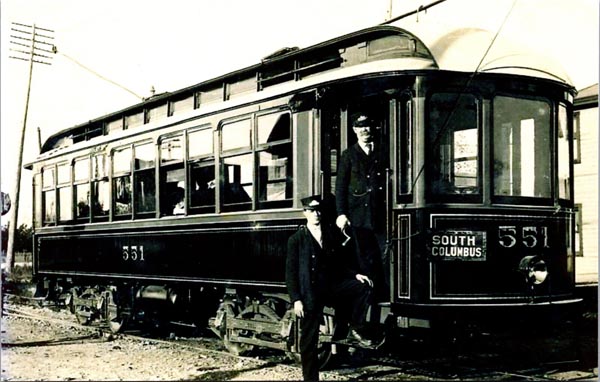
Click to enlarge
No. 551, a standard gauge, closed body, interurban style car. It may have been built by the Laconia Car Co. This car served the Steelton-Summit line and the Steelton - Worthington line. Photo from Alex Campbell Collection, the location may be the Merritt Street car house, Circa 1910.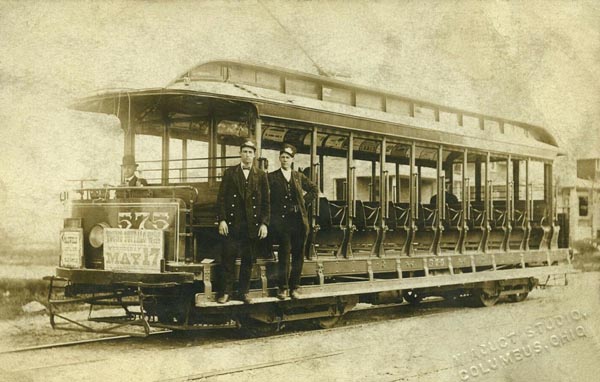
Click to enlarge
No. 575, a standard gauge, open body streetcar that may have been built by the Laconia Car Co. This car likely served the standard gauge Steelton-Summit and Chase-Mound lines. Young’s Buffalo Wild West was in Columbus on May 17, 1911. Photo from Alex Campbell Collection, location unknown, 1911.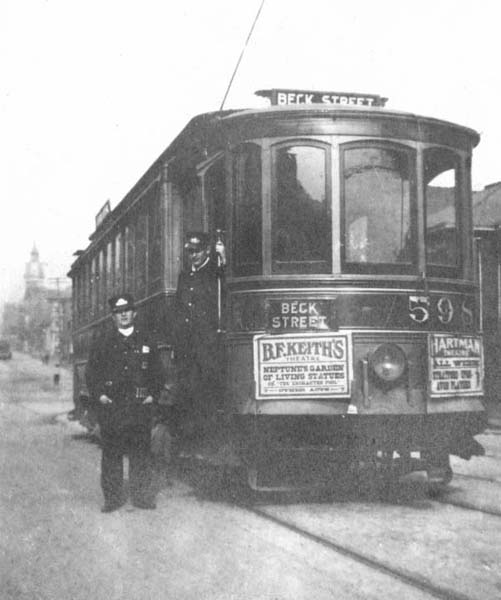
Click to enlarge
No. 598, a closed P.A.Y.E. car built by the G.C. Kuhlman Car Co. in 1909. The car is signed for Beck Street which is the location of the South High Street carhouse. Photo from the Galen Gonser Collection, Circa 1915.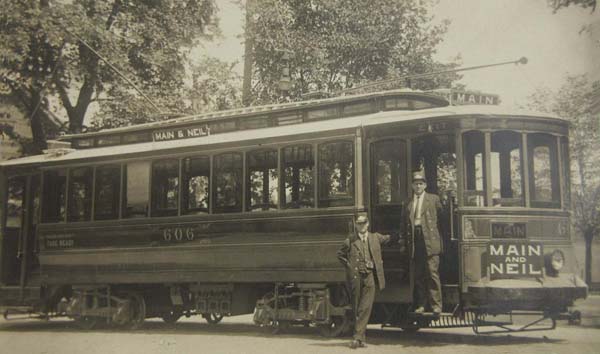
Click to enlarge
No. 606, a closed P.A.Y.E. (Pay As You Enter) streetcar built by the G.C. Kuhlman Car Co. in 1909. This car served the Main-Neil line. Photo from Alex Campbell Collection, location unknown, 1915.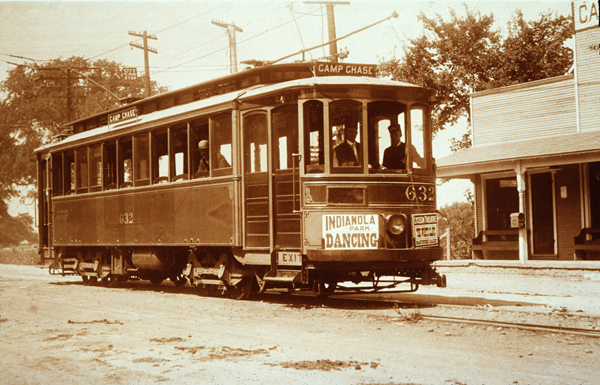
Click to enlarge
No. 632, a closed car built by G.C. Kuhlman Car Co. in 1910. This car served the Camp Chase line. This is one of the very few CRP&L Co. cars with four motors. The extra power was needed to climb the grade to the Hill Top. Photo from Columbus Metropolitan Library Collection, 1915.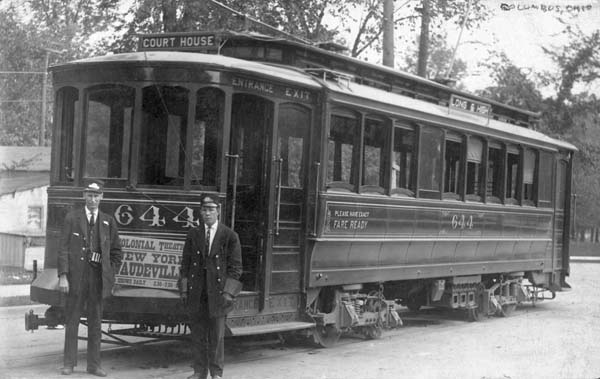
Click to enlarge
No. 644, photo taken on Parkwood Avenue at the east end of the Long Street line. East Broad Street and Franklin Park are in the background. Photo from the Galen Gonser Collection, circa 1915.
Click to enlarge
No. 647, a closed P.A.Y.E. car built by the G.C. Kuhlman Car Co. in 1911. This car served the Long-High line. Photo from Alex Campbell Collection, location unknown, 1915.